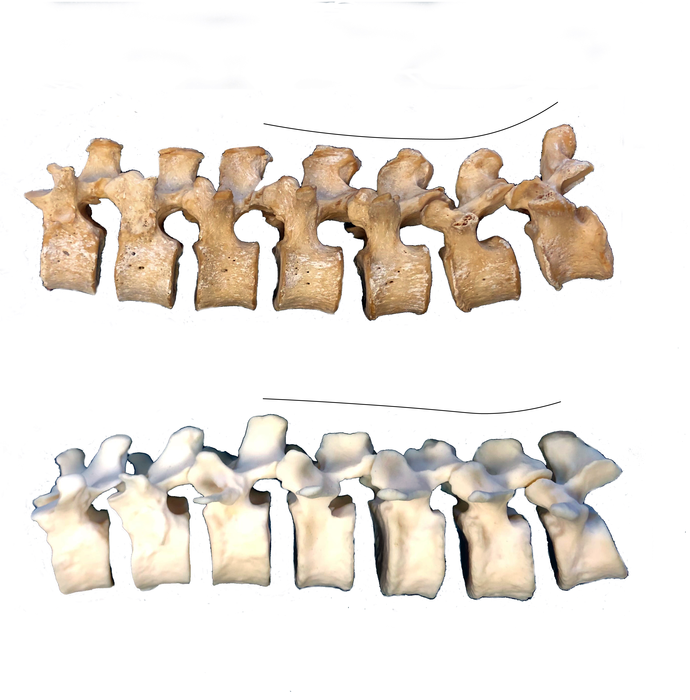Neanderthal spine study sheds light on back pain and related ailments in humans
Neanderthals’ spines significantly different from those in post-industrial people, but not from pre-industrial humans

Spine structure differences between modern humans and Neandertals shed light on lower back pain and related ailments that people experience today, according to a new study.
The comparative study, published Wednesday in the journal PNAS Nexus, examined the spines of modern humans who lived in the pre-industrial revolution era as well as those of post-industrial people from around the world, along with samples of Neandertal spines.
Overall, the analysis included 1,660 vertebrae represented by 332 modern male and female humans, say the researchers, including those from New York University (NYU) in the US.
Researchers particularly assessed the curvature of these spines, which is partly caused by a wedging, or angling, of vertebrae and the intervertebral discs – the softer material between the vertebrae.
They found that Neanderthals’ spines were significantly different from those in post-industrial people, but not from pre-industrial people.
The research also revealed that spines in post-industrial people showed more wedging of the lumbar region, or the lower vertebrae, than did those in pre-industrial people and in Neanderthals.
“Our results demonstrate significant differences between postindustrial cadaveric remains and archaeological samples of people that lived preindustrial lifestyles. We suggest these differences are related to activity and other aspects of lifestyle rather than innate population (ancestry) differences,” scientists wrote in the study.
Previous studies have indicated that Neanderthal spines also experienced lumbar wedging, and the extinct human cousins likely possessed curved lower backs too like us.
But Neandertals have also long been thought to have a different posture than modern humans.
This is partly because studies have suggested their spines in the lumbar region curved less than those of modern humans, scientists say.
However, they say the modern human spines in these studies were of those who lived well after the onset of industrialisation, which significantly altered people’s lives.
“Past research has shown that higher rates of low back pain are associated with urban areas and especially in ‘enclosed workshop’ settings where employees maintain tedious and painful work postures, such as constantly sitting on stools in a forward-leaning position,” study co-author Scott Williams from NYU said in a statement.
By examining spines from humans who lived in the post-industrial era, researchers say these early studies may have mistakenly concluded that spine formation seen in modern humans Homo sapiens is due to evolutionary development rather than changed living and working conditions.
“A pre-industrial vs. post-industrial lifestyle is the important factor,” Dr Willams noted.
Distinctions in spine formation between pre-industrial and post-industrial humans offer fresh insights into back conditions facing many today, researchers say.
“Diminished physical activity levels, bad posture, and the use of furniture, among other changes in lifestyle that accompanied industrialisation, resulted, over time, in inadequate soft tissue structures to support lumbar lordosis during development,” Dr Williams said.
Lumbar lordosis is the slight curving inward of the lower back, and is seen as a primary adaptation in humans and other closely related hominin ancestors that walk on two feet.
“To compensate, our lower-back bones have taken on more wedging than our pre-industrial and Neandertal predecessors, potentially contributing to the frequency of lower back pain we find in post-industrial societies,” Dr Williams explained.
Subscribe to Independent Premium to bookmark this article
Want to bookmark your favourite articles and stories to read or reference later? Start your Independent Premium subscription today.

Join our commenting forum
Join thought-provoking conversations, follow other Independent readers and see their replies
Comments